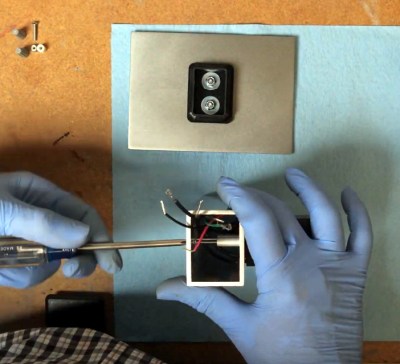Back in 2013, [Karl Lautman] successfully got his kinetic sculpture Primer funded on Kickstarter. As the name implies, you press the big red button on the front of the device, and the mechanical counter at the top will click over to a new prime number for your viewing pleasure. Not exactly a practical gadget, but it does look pretty slick.
 These days you can still by your very own Primer from [Karl], but he tells us that the sales aren’t exactly putting food on the table. At this point, he considers it more of a self-financing hobby. To illustrate just what goes into the creation of one of these beauties, he’s put together a time-lapse video of how one gets built from start to finish, which you can see after the break.
These days you can still by your very own Primer from [Karl], but he tells us that the sales aren’t exactly putting food on the table. At this point, he considers it more of a self-financing hobby. To illustrate just what goes into the creation of one of these beauties, he’s put together a time-lapse video of how one gets built from start to finish, which you can see after the break.
Even if you’re not interested in adding a mathematics appliance to your home, we think you’ll agree that the video is a fascinating look at the effort that goes into manufacturing a product that’s only slightly north of a one-off creation.
The biggest takeaway is that you really need to be a jack of all trades to pull something like this off. From milling and polishing the metal components to hand-placing the SMD parts and reflowing the board, [Karl] demonstrates the sort of multi-disciplinary mastery you need to have when there’s only one person on the assembly line.
Small scale manufacturing isn’t cheap, and is rarely easy. But stories like this one prove it’s certainly possible if you’re willing to put in the effort.
















I’m glad that folks wil pay enough for the designer to manufacture them. Any time you can sell a one-off for a net profit it’s a win!
I first thunk how you could make it punnier, by casing it in a transformer robot, but then thought that the button would end up where Optimus Prime’s groin is, now it’s ruined.
Ruined . . . or improved?
This is not ‘small-scale production’ – it is a singular and sequential hobby build. What some of my clients do is certainly ‘small-scale’, as they make but a few things per week or day, but do stuff in parallel and have a true production process; ya know – test fixtures, construction aids, documentation, etc.
So the writer’s “self-financing hobby” descriptor should have been the title. By the powers vested in me per my dog and cat and koi fish, I hereby declare the title click-bait.
Production is preceded by “mass” to denote industrial type, Adam Smith division of labor. You can produce a single object.
‘Industrial’ production does not infer ‘mass production’; see https://en.wikipedia.org/wiki/Mass_production.
‘Division of labor’, per Smith, is for efficiency and productivity via specialization; and where production volume is not necessarily related to ‘mass production’.
I have been the principle or a team member for the design and implementation of several dozen production lines over the last 30 years. Some were two or three people operations, but most lines were at least 20 people (and one had several dogs as part of the process). And none of them resembled what is presented by the writer.
Why are you telling us about your work experience
It’s like when some old gaffer tells you about working on the farm 60 years man and boy so therefore you can’t use the word tractor to describe a propeller that pulls rather than pushes.
Primer sculptor here. FWIW, I usually make sub-assemblies in batches of five (five bodies, five bases, five counters, five PCBs, etc.) so I can assemble five Primers fairly quickly if I need to, while always having one on the shelf, packed and ready to ship. The video makes it look like I only make one Primer at a time. In particular, I would never reflow a single PCB (I can easily fit ten in the oven), but didn’t need five when I made the video, so I just reflowed the one for demonstration purposes.
Karl: Charge more.
So because you only saw one of them in the video, you seriously thought that’s all he’s made? There’s like 80 backers on the KS alone.
And there are a few pretty cool projects on his website. I especially like his perpetual domino sculpture!
http://karllautman.com/work.html